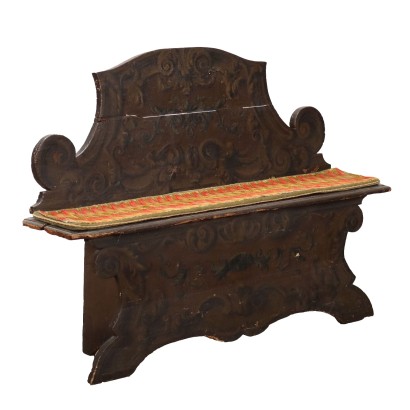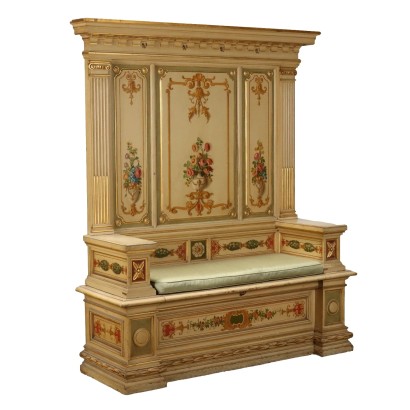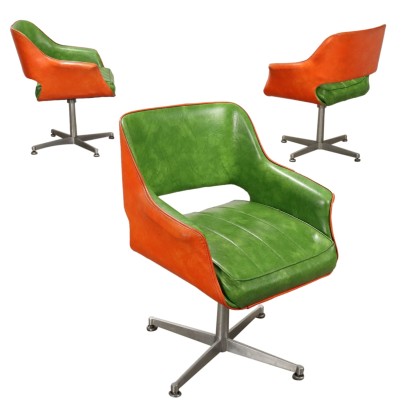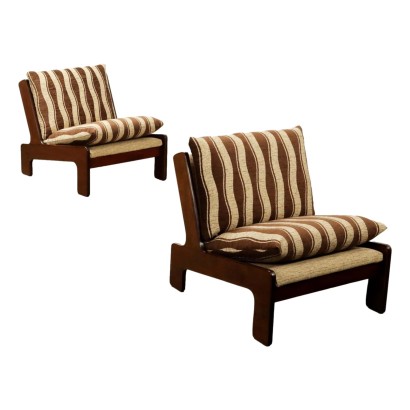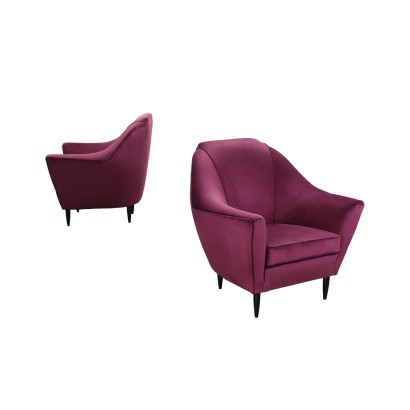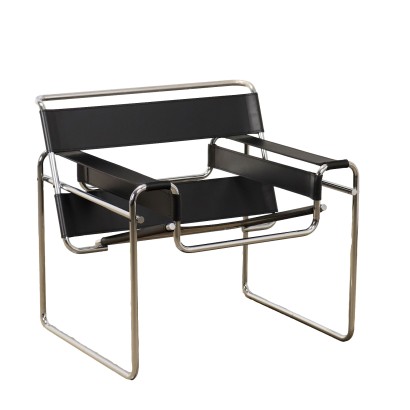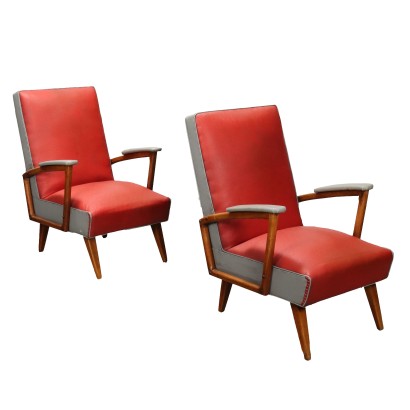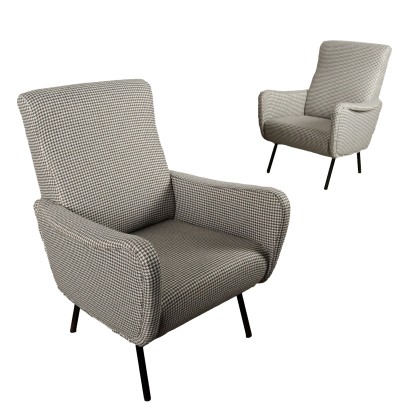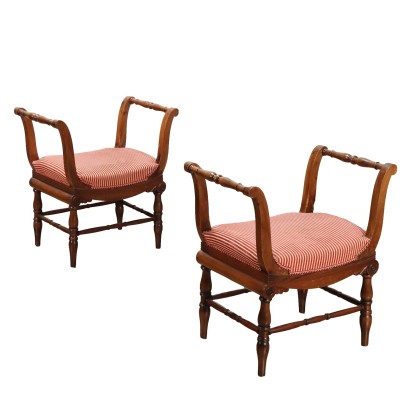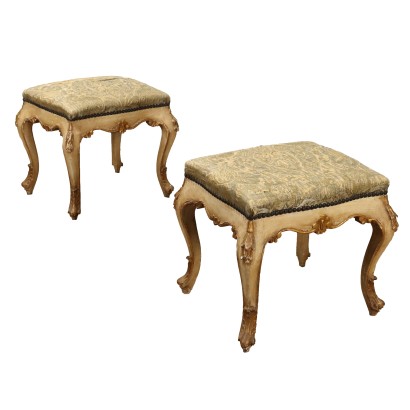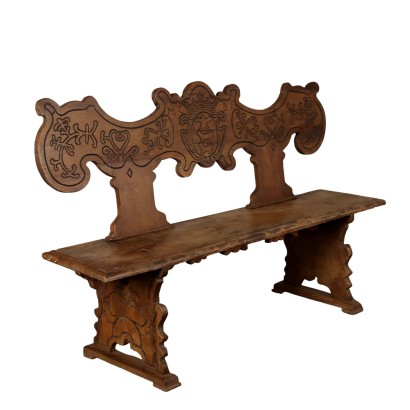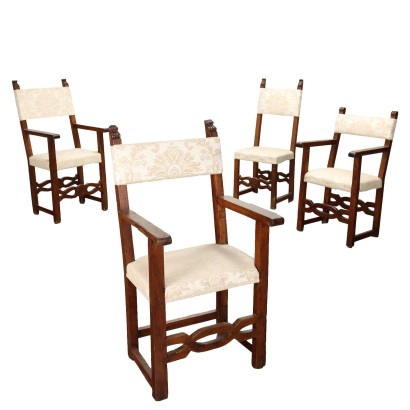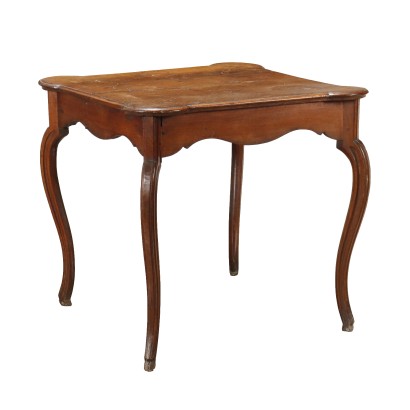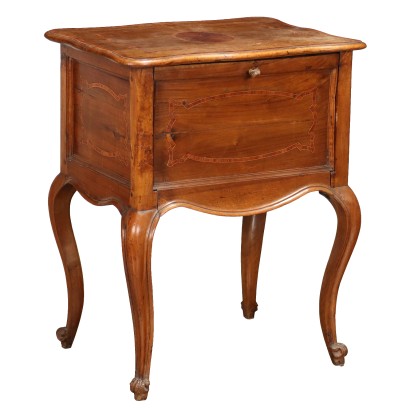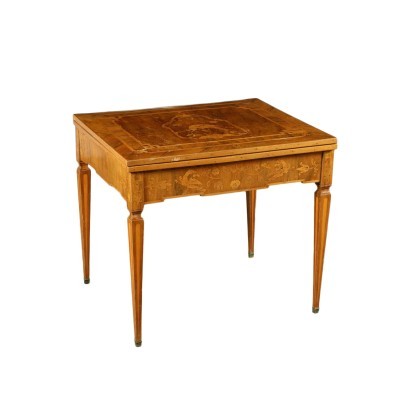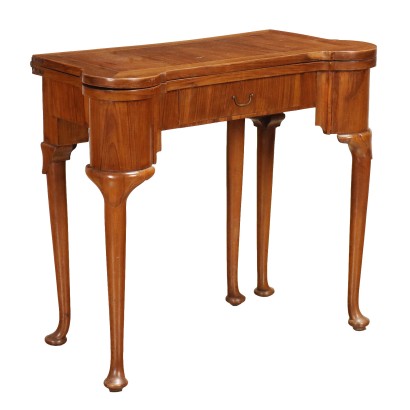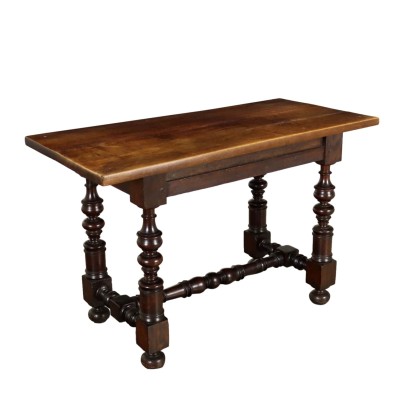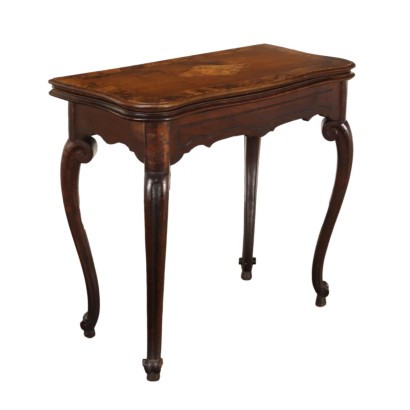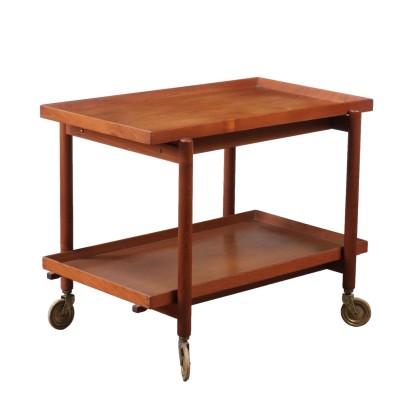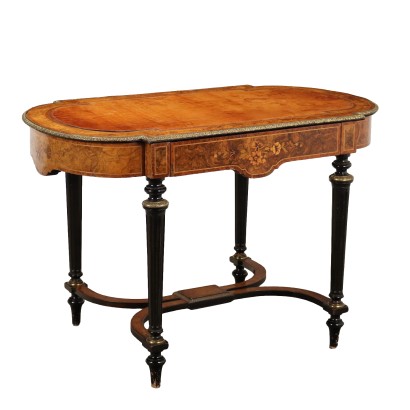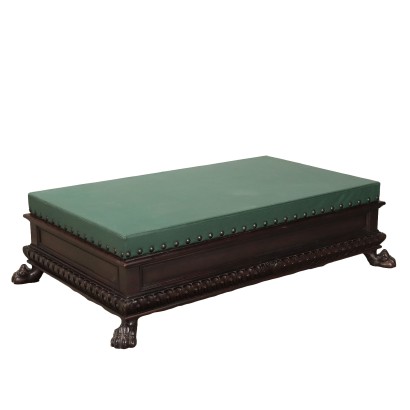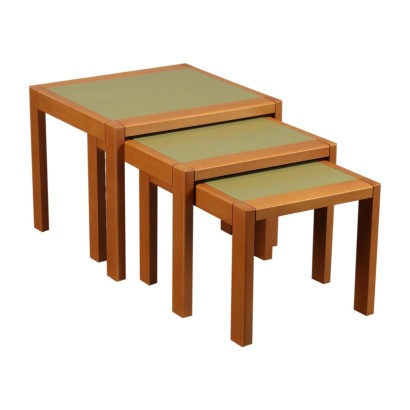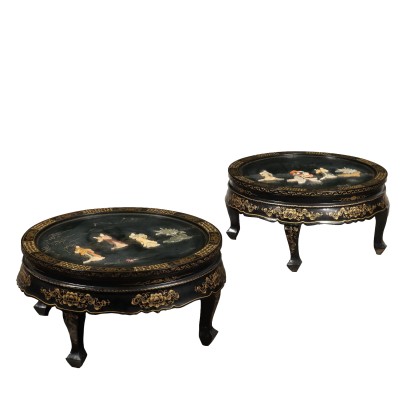Antique Baroque Bench Lacquered Wood Italy XVIII Century - Italy, Early XVIII Century
Features
Italy, Early XVIII Century
Style: Baroque (1630-1730)
Age: 18th Century / 1701 - 1800
Origin: Italy
Main essence: Poplar
Material: Painted Wood , Lacquered Wood
Description
Lacquered and painted poplar baroque bench, early 18th century Italy. Shaped back and front panel, lacquered and painted with leaf volutes, curls and shell elements, typical of the decorative taste of the early 18th century. Openable seat concealing inner compartment and fitted with cushion, not contemporary. Restorations and parts of lacquerwork restored; reduced in the cimasa.
Product Condition:
Product which due to age and wear requires restoration and re-polishing. We try to present the real state of the furniture as completely as possible with photos. If some details are not clear from the photos, what is stated in the description applies.
Dimensions (cm):
Height: 98,5
Width: 143
Depth: 35,5
Additional Information
Style: Baroque (1630-1730)
Read more
The term derives from the Spanish barrueco phoneme or Portuguese barroco and literally means "shapeless pearl".
Already around the middle of the eighteenth century in France it was synonymous with uneven, irregular, bizarre, while in Italy the term was of Medieval memory and indicated a figure of the syllogism, an abstraction of thought.
This historical period was identified with the derogatory term baroque, recognizing in it extravagance and contrast with the criteria of harmony and expressive rigor to which it was intended to return under the influence of Greco-Roman art and the Italian Renaissance.
Baroque, seventeenth-century and seventeenth-century were synonymous with bad taste.
As regards furniture, freedom of ideation, need for pomp and virtuosity gave rise to a synergy destined to produce unsurpassed masterpieces.
The materials used were worthy of competing with the most astonishing tales of Marco Polo: lapis lazuli, malachite, amber, ivory, tortoiseshell, gold, silver, steel, precious wood essences and more dressed the furnishings that in shape and imagination virtually gave life to the Arabian Nights of many of our powerful people.
Typical of the period were load-bearing or accessory parts resolved with twisted column motifs, clearly inspired by Bernini's canopy of St. Peter's, parts with rich sculptural carving in high relief and even in the round within a vortex of volutes, scrolls and spirals, curved and broken profiles, cymatiums agitated by gables of articulated shape, aprons adorned with ornaments, corbels, buttresses and so on. necessary to enliven shapes and structures.
The Baroque is also the century of illusionism: lacquers and thin temperas crowd furniture and furnishings to imitate with the marbling effects of marble veining or games of veining of precious briar roots.
Find out more about the Baroque with our insights:
Classic Monday: a double-body sideboard, late Venetian Baroque
Classic Monday: a pair of candle holders between the Renaissance and Baroque
Classic Monday: a pair of mirrors between Baroque and Late Baroque
Age: 18th Century / 1701 - 1800
18th Century / 1701 - 1800Main essence: Poplar
Essence considered "poor", it is a white wood, with yellowish or greyish shades, light and tender, which is easily damaged. It is used for rustic furniture or in the construction of furniture. The most valuable use it has had in the history of furniture is in Germany, in the 19th century, for veneers and inlays in the Biedermeier period.Material:
Painted Wood
Lacquered Wood
Other customers have searched:
Panche, scanno, banchetta, banco, panchina, panca, cassapanca..
Approfondimenti
Dai un'occhiata anche ai nostri approfondimenti sulle panche antiche, sia sul blog che su FineArt:
Un mix di stili in una panca del XVIII secolo
Panchetto anni '60
Per saperne di più sulle cassapanche, sbricia i nostri approfondimenti su FineArt:
Un importante cassone italiano del XVI secolo
Un cassone pirografato veneto, di fine XVI
Lussuosi bauli Luis Vuitton del 1925
Sull'antiquariato in generale dai un'occhiata anche a:
Classic Monday: da un pezzo dei nostri magazzini alla storia dell'antiquariato
L'antiquariato dalla A alla Z: il Dizionario dell'Antiquariato
Il dizionario dell'antiquariato - Lastronatura
Il dizionario dell'antiquariato - Mascherone
Il dizionario dell'antiquariato - Natura morta
Il dizionario dell'antiquariato - Opificio
Il dizionario dell'antiquariato - Pastiglia
Il dizionario dell'antiquariato - Savonarola
Il dizionario dell'antiquariato - Rosone
Intaglio barocco con motivo a ricciolo
Approfondimenti
Dai un'occhiata anche ai nostri approfondimenti sulle panche antiche, sia sul blog che su FineArt:Un mix di stili in una panca del XVIII secolo
Panchetto anni '60
Per saperne di più sulle cassapanche, sbricia i nostri approfondimenti su FineArt:
Un importante cassone italiano del XVI secolo
Un cassone pirografato veneto, di fine XVI
Lussuosi bauli Luis Vuitton del 1925
Sull'antiquariato in generale dai un'occhiata anche a:
Classic Monday: da un pezzo dei nostri magazzini alla storia dell'antiquariato
L'antiquariato dalla A alla Z: il Dizionario dell'Antiquariato
Il dizionario dell'antiquariato - Lastronatura
Il dizionario dell'antiquariato - Mascherone
Il dizionario dell'antiquariato - Natura morta
Il dizionario dell'antiquariato - Opificio
Il dizionario dell'antiquariato - Pastiglia
Il dizionario dell'antiquariato - Savonarola
Il dizionario dell'antiquariato - Rosone
Intaglio barocco con motivo a ricciolo

